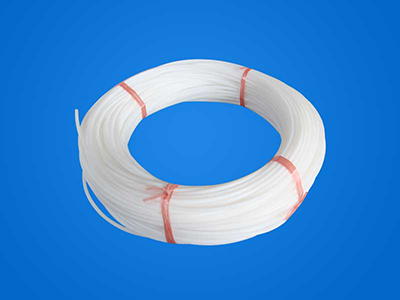When the PTFE Tube is subjected to more pressure than it can support in the axial direction, it will bend like a compression member or a cylindrical spiral spring and lose its straight-line shape. It is certain.
How much pressure can PTFE Tube bear?
If the internal pressure borne by the tetrafluorocarbon tube exceeds a certain value of the pressure it can support, it will also produce instability. Experiments show that the failure of high-pressure rubber tube in engineering is mostly caused by this reason. Whether it is elastic seal, axial expansion compensator or rubber tube, there will be such a situation; the ability of PTFE tube to bear internal pressure generally depends on the non randomness. In order to study the randomness of the high-pressure rubber tube, the Euler formula can be used to calculate its critical load. Because of the processing deviation of the corrugated geometry and material thickness, the axis of the PTFE tube often deviates from the original symmetry axis. In other words, the axis of the actual high-pressure rubber tube has some initial curvature. For the rubber hose, the unevenness of the braiding and the inconsistency of the strength of each department also limit the bearing capacity of the high-pressure rubber hose.
The relative molecular weight of polytetrafluoroethylene is relatively large, which is hundreds of thousands at the low level, more than 10 million at the high level, generally millions (the degree of polymerization is in the order of 10 ^ 4, while the polyethylene is only in the order of 10 ^ 3). Generally, the crystallinity is 90-95%, and the melting temperature is 327-342 ℃. CF2 units in polytetrafluoroethylene molecules are arranged in zigzag shape. Because the radius of fluorine atom is slightly larger than that of hydrogen, the adjacent CF2 units can not be completely trans cross oriented, but form a spiral twisted chain. Fluorine atom almost covers the surface of the whole polymer chain. This molecular structure explains the various properties of polytetrafluoroethylene. When the temperature is lower than 19 ℃, a 13 / 6 helix is formed; when the temperature is 19 ℃, a phase transition occurs, and the molecule is slightly uncoupled, forming a 15 / 7 helix.

Address: Zhaojiaqiao, Shebei Village, Xin'an Town, Deqing County, Zhejiang Province 313217, China
Phone: 0572-8080386
Fax: 0572-8083507
Email: info@nxptfesheet.com
Wechat:13665722632
SKYPE: hznx.ptfe
© Copyright 2015. Green Machine Tool Co., Ltd.